
Most workplaces are well prepared for emergencies such as fires, spills and common injuries but what about Sudden Cardiac Arrest (SCA)? SCA is a serious incident that requires immediate attention to prevent extensive heart damage and even death.
SCA can happen anywhere, at any time. When it does, the victim’s best chance of survival depends on immediate CPR and a rescuer with an automated external defibrillator (AED).


What is SCA?
SCA is the immediate loss of heart and breathing functions. It is usually coupled with the sudden onset of unconsciousness.
The condition results from problems with the electrical conductivity of the heart. This interrupts healthy rhythms and pumping actions, leading to poor or no circulation.
People often confuse SCA with a heart attack, but they are not the same. The latter has to do with the blockage of blood flow to a certain area of the heart. It is, however, possible for a heart attack to cause an electrical disturbance resulting in SCA.
Warning signs of SCA
Firstly, be aware that SCA often occurs out of the blue. There are tangible symptoms, but once they occur, a person may already be experiencing SCA.
That said, it is always good to be conscious of signs that may manifest in order to act as soon as possible. The onset is quick and intense, resulting in sudden collapse, no pulse or breathing, and loss of consciousness.
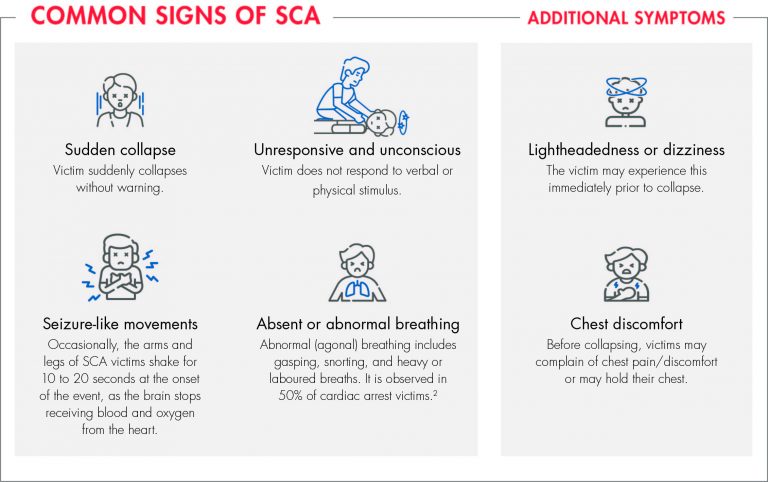
What do the statistics say?
A March 2020 report found that worldwide more than seven million people suffer from SCA. The survival rate sits at a shocking 5% to 10%.
The British Heart Foundation pegged the number of SCA incidents in the UK at approximately 130,000 with an estimated 8% survival rate. Most events happen outside of the hospital due to the unpredictability and suddenness of SCA.
The UK Out of Hospital Cardiac Arrest Outcome (OHCAO) project developed a database to plot the number of people in the UK who suffer SCA or out-of-hospital cardiac arrest.
According to the OHCAO:
- NHS ambulance services try to resuscitate roughly 30,000 patients every year
- SCA incidents account for approximately 55 out of every 100,000 citizens
- An estimated 15% of SCA emergencies occur in the workplace
- About half of all SCA incidents happen in the presence of others
- Bystanders try to administer cardiopulmonary resuscitation (CPR) in about seven out of 10 cases
- Public-access defibrillators or automated external defibs (AEDs) are used in less than one out of 10 SCA incidents
- Lack of training and availability of AEDs directly impact escalated health risks and fatalities.
The British Red Cross indicated that the quick and right use of on-site AEDs can increase SCA survival rates to between 50% and 70%. This figure drops dramatically with every minute that passes without a form of resuscitation and defibrillation
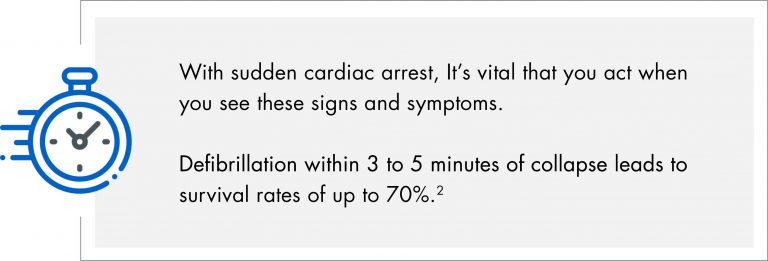
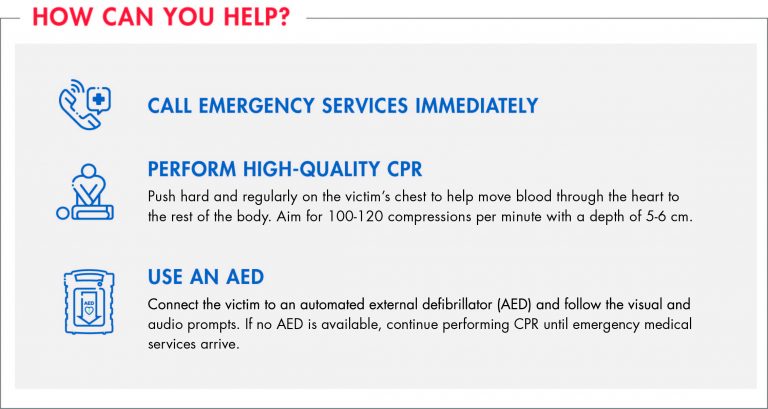
Having an AED on site in the case of a sudden cardiac arrest can be a lifesaving decision.
The European Resuscitation Council (ERC) recommends the availability of AEDs in places where access to emergency services may be delayed. A workplace falls into this category. Early intervention can increase survival rates.
Do you know which automated external defibrillator (AED) to choose for your workplace? Here, we explore the core differences and key features of AEDs so that you can make an informed decision and get the one that works best for your setup. For larger sites, this may require placing multiple AEDs throughout the workplace.
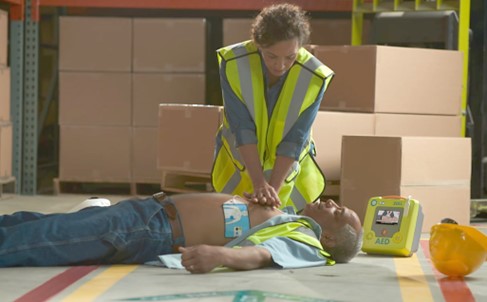

Semi vs Fully Automatic AEDs
A semi-automatic AED monitors heart rate, and, if necessary, a person presses a button to deliver an electric shock. This type needs human intervention and there’s always the risk that the defibrillation won’t be delivered in time.
Fully automatic AEDs, on the other hand, automatically defibrillate a patient after monitoring the heart rhythm. Apart from applying the necessary pads, the machine doesn’t need an operator. It simply instructs bystanders to stand clear and delivers the shock, taking human hesitation out of the equation.

AED Use: Adults, Children, or Both?
CPR in children and adults differs slightly. The same goes for defibrillation with an AED where pad size and shock strength are important. You don’t have to buy separate AEDs for children and adults if your environment, such as a retail outlet, hosts a mix of the two.
There are models that use the same electrode pads for all ages and just have a mode selection switch to distinguish between adults and children. With other models, you’ll need to get different size pads.
 Again, your environment determines what you need in this case. Offshore operations where no children are present don’t have to cater for them. Remember, pads are consumables and only last for a limited time, even when sitting on a shelf.
Again, your environment determines what you need in this case. Offshore operations where no children are present don’t have to cater for them. Remember, pads are consumables and only last for a limited time, even when sitting on a shelf.
IP ratings
Your physical environment is related to your choice of AED and dictates the degree of ingress protection.
(IP) needed. Different IP ratings offer different levels of protection. IP ratings have two numbers – the first, between 0 and 6, is for solids, and the last, between 0 and 8, is for liquids. Higher numbers indicate higher levels of protection. An X instead of a number lets you know that a device wasn’t tested for that specific category.
For example, an IP20 rating is touch-proof to help prevent electric shocks, whereas an IP68 rating makes a unit completely dust-tight and waterproof. So, a busy shipyard with contamination and water risks would need high IP to safeguard the equipment and keep it in working order.
Size and Weight
In some work setups, such as search and rescue operations and big warehouses, AEDs need to be transportable. The size and weight of your choice play a role in how easy it is to carry and take the unit with you.
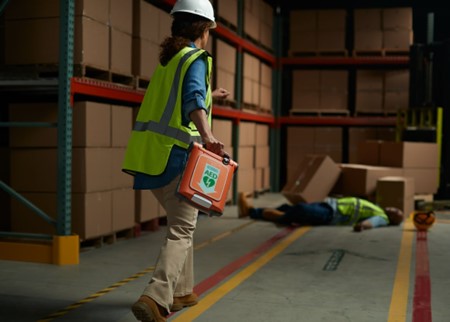
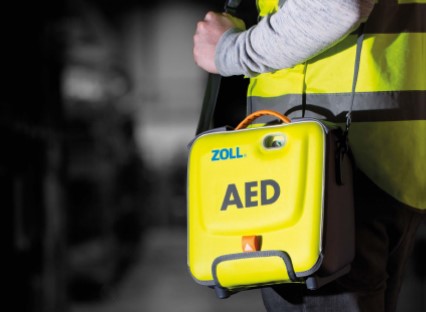
CPR Coaching
You will come across AED models with integrated CPR coaching functions. These talk the lay rescuer through the CPR steps or feature flashing indicators to help keep time with chest compressions. Voice prompts include guidance on the depth, recoil and speed of compressions.

Battery standby life and replacement costs
An AED battery with a long shelf life saves money and eliminates the risk of a machine with low battery when it is needed for an emergency.
Electrode pad shelf life and replacement costs
Electrode pads are single-use items. This means that once you have used a set on a person, you need to replace them. People often forget that these consumables also have a shelf life and expire after a time. So, factoring in these costs plays a part in your AED choice.
Safety Signs and Extras
To help ensure that you and your employees can provide rapid and effective treatment when a medical emergency occurs, it should take no longer than 3 minutes to retrieve an AED in any workplace location.
It is recommended best practice to position AED signs in suitable locations around your premises so your AED can be located quickly in the event of an emergency. Signs will help navigate people to your AED and clearly highlight its location.
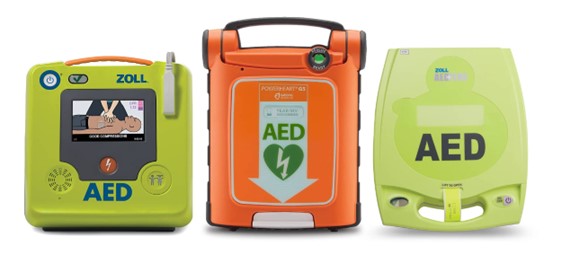
Here at Seton you won’t just find a full range of expert approved and top-quality UK defibrillators but also, an in-depth guide on what they are, why you need them and help choosing which is best for your exact circumstances and the features that each defibrillator offers.
Find out more:

